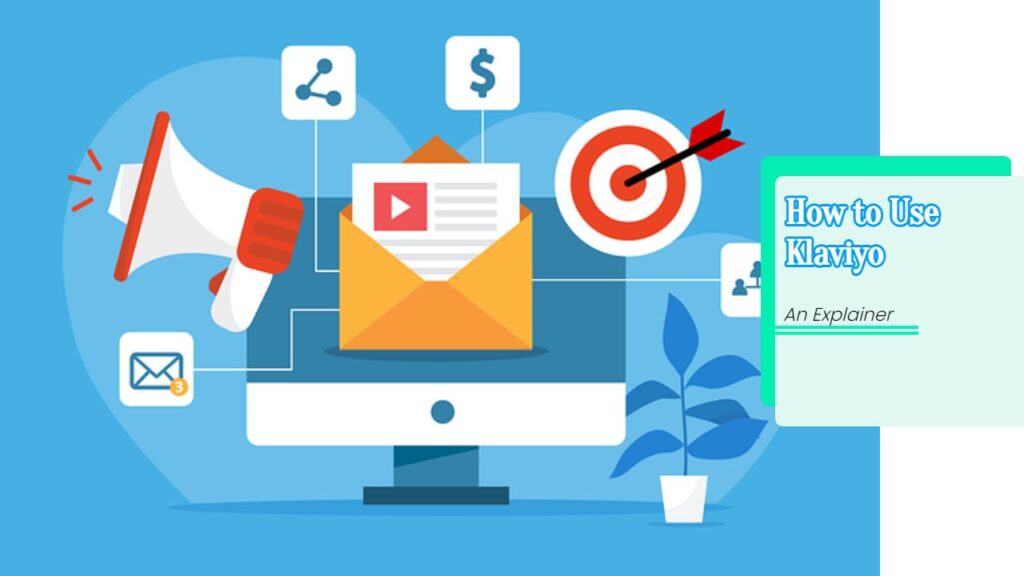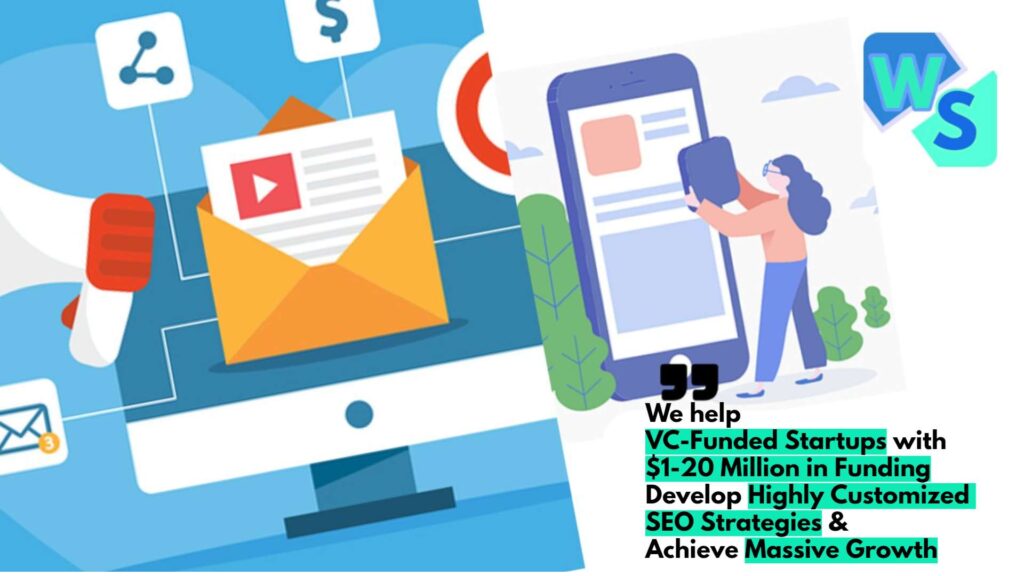Data-Driven Marketing Strategies
In the business of professional services marketing, making smart moves with data is the name of the game when it comes to keeping clients close and upping those conversion rates. Getting the hang of splitting customers into groups and sprucing up their experiences is all part of the plan.
Importance of Customer Segmentation
Cutting up your customer base into neat little slices lets you serve them just right. When businesses dig into their data, they can slap labels on different client groups based on things like age, hobbies, or spending habits. It’s like having a secret sauce for crafting spot-on marketing campaigns. Gone are the days of blanket solutions – segmenting customers lets you hit the bullseye, every time.
Research shows this breakdown boosts revenue by sharpening how we personalize pitches, tweak product designs, and sweeten user experiences. Plus, it helps tread the tricky waters of budget planning, ensuring every penny counts (Amplitude Blog).
| Segmentation Criteria | What It Means | Benefits |
|---|---|---|
| Demographics | Age, gender, salary | Hits the right note with messaging |
| Psychographics | Hobbies, beliefs, lifestyles | Each user gets a VIP experience |
| Behavioral Data | Shopping trends, activity levels | Keeps customers coming back for more |
This segmentation game gives service pros the lowdown on how to treat clients like individuals. It’s that extra bit of insight that ramps up engagement and keeps customers loyal and coming back (Amplitude Blog).
Enhancing Customer Experiences
Using data-driven know-how to smooth out the customer experience ride is a must for service-based companies. With analytics on their side, companies pinpoint hiccups in the customer’s path and tweak their services to fit the bill. Doing so not only plants trust but also lays down the roots for relationships that last.
Those nuggets of insight from customer segmentation are what businesses need to craft custom chats and services that feel handpicked for each person. These bespoke experiences are the secret weapon for happy clients and long-standing loyalty, feeding into more sales overall (GO Squared).
| Experience Tactic | How It’s Done |
|---|---|
| Customized Messaging | Craft messages using customer intel |
| Service Tweaks | Fine-tune services to match client tastes |
| Feedback Action | Use feedback to boost service delivery |
In a nutshell, homing in on customer segmentation and boosting how they feel while interacting is the backbone of data-driven marketing. Consultants, coaches, and service-based entrepreneurs who embrace these principles build tighter connections with their clients, leading to winning marketing strategies and business success. Check out more on social media marketing for professional services and lead generation for professional services for a deeper dive.
Benefits of Data-Driven Marketing
Data-driven marketing brings an array of perks for service-oriented businesses. By diving into data insights, consultants, coaches, and service-based business owners can sharpen their marketing strategies and boost client interaction.
Better ROI and Understanding of Customers
Taking a data-driven tack makes it easier to keep an eye on marketing campaigns, making it possible to tweak strategies as you go. This means more bang for your buck as businesses direct their spending towards what actually works. Experts at Measured say this approach can really crank up ROI, make marketing more efficient, and offer deeper insights into how customers behave.
Here’s a simple breakdown of how going data-driven amps up ROI and customer understanding:
| Benefit | Description |
|---|---|
| Higher ROI | Spending wisely means more return on every marketing dollar spent. |
| Better Monitoring | Make on-the-spot changes based on what’s happening now. |
| Deeper Customer Insights | Get to know who your customers are and what they like, driving more sales. |
| Improved Lead Conversions | Customized strategies march prospects straight down the sales path. |
With data, service folks can spot chances for cross-selling and keep the engagement going post-sale, which is super important for keeping customers coming back (Yokel Local).
Personalization for Bigger Sales
Data-driven marketing helps shape campaigns that feel personal and targeted. By digging into what customers like, how they live, and what they do online, businesses can whip up marketing messages that hit home with the right crowd. This kind of personalization cranks up customer engagement and leads to better conversions, ultimately bumping up sales.
Here’s a snapshot of what personalization powered by data-driven marketing can do:
| Personalization Benefit | Impact |
|---|---|
| Greater Customer Engagement | Customized messages build stronger ties. |
| Enhanced Lead Conversions | Messaging struck to fit customer needs leads to more successful sales trips. |
| Cross-Selling Opportunities | Customer behavior insights help uncover more sales possibilities. |
| Improved Post-Sale Engagement | Keeps customers interested and loyal, boosting long-term management of relationships. |
By fine-tuning marketing content to jive with customer insights, service providers can pull in business more effectively and fine-tune their overarching digital marketing for professional services game plan. Data-driven personalization not only makes marketing efforts more effective, but also plays a big role in the success of a service-centric business.
Utilizing Artificial Intelligence in Marketing
Artificial intelligence (AI) is now a game changer for businesses looking to up their data-driven marketing game. With AI, companies can ramp up their strategies, getting personal and predicting what’s next.
Hyper-Personalization Strategies
Hyper-personalization’s all about getting cozy with your customer. It’s digging deep into what makes them tick and using that info to keep them coming back for more. AI is the star player here, crunching numbers and understanding customer quirks like never before.
| Feature | Description |
|---|---|
| Personalized Recommendations | AI is that friendly nudge, suggesting what you might like based on past clicks, driving sales sky-high. |
| Unique Discounts | Everyone loves a deal. AI crafts promotions that hit home, making customers feel seen and saving dollars on the regular. |
| Customized Content | AI gets personal, whipping up content that piques your interest, making interaction feel oh-so-relevant. |
These personalized gestures build customer loyalty stronger than ever. As Measured suggests, a little personalization goes a long way in keeping customers happy and coming back.
Predictive Analysis Techniques
Predictive analysis is where AI shows its crystal ball capabilities. By studying what customers have done, it guesses what they might do next, helping businesses plan smartly.
| Benefit | Description |
|---|---|
| Improved Targeting | By looking at past data, AI fine-tunes marketing to be spot-on with future customer wants and needs. |
| Resource Optimization | Spend wisely! With AI predictions, businesses put their money where it matters most. |
| Enhanced Sales Generation | Prediction equals precision, leading to more effective marketing and boosted sales. |
With predictive analysis, marketing campaigns aren’t just better—they’re smarter, saving money and time. AI turns numbers into clear direction, amping up marketing efforts overall. For more tips and tricks, check out professional services marketing strategies.
Keeping Data Privacy in Check
In this day and age of data-driven marketing, protecting folks’ private info is a must. Let’s look into the rule book for keeping data safe and the tech tools that can keep customer data under lock and key.
The Law You Need to Know
Marketers have loads of rules to keep square with when it comes to data privacy. For instance, over in Europe, the General Data Protection Regulation (GDPR) lays down the law on using personal data. Across the pond, the California Consumer Privacy Act (CCPA) does likewise in the States. Staying on the right side of these laws not only avoids legal hot water but also wins over customers’ trust.
| Rule | Big Deals |
|---|---|
| GDPR | You need folks’ consent before using their data, recognize their rights, and tell them if things go south. |
| CCPA | Spill the beans on your data habits, give the option to opt-out, and let ’em see their data. |
Check out Improvado for more on what you need to get done to stick to the rules.
It’s important for companies to clue in their staff about these rules so everyone’s on the same page. Being open about how data’s collected can help firms build ongoing customer trust and shine in the marketplace.
Tech Helps to Lock It Down
Rules aren’t the only trick in the bag; tech can also play a big role in locking down customer info. Got encryption, secure servers, and data anonymization? These can zap security worries and boost privacy.
- Encryption: Scrambling data whether it’s sitting or on the move means even if someone gets it, they can’t make heads or tails of it.
- Secure Servers: Parking data on safe and sound servers cuts down the risk of snoopers.
- Data Anonymization: Scrubbing personal details from data lets companies keep sneaky insights without blowing anyone’s cover.
| The Tech | The Good Stuff |
|---|---|
| Encryption | Keeps data on the straight and narrow. |
| Secure Servers | Cuts down on breaches. |
| Data Anonymization | Offers insight without spying on individuals. |
Weaving this tech into marketing efforts isn’t just legal- it’s essential for keeping customers feeling cozy about how their details are handled.
Professionals who want to market without stepping on toes must routinely check their data handling game, keeping in line with changing laws and tech. For more marketing know-how suited to service industries, take a look at digital marketing for professional services and b2b marketing for service providers.
Effective Market Research Data Collection
In data-driven marketing for services, getting your hands on good market insights is a big deal. There’s no magic wand, but two solid ways to scoop up this gold are through surveys and interviews. These trusty tools give you the juicy details to shape marketing plans for folks like consultants, coaches, and service biz owners.
Surveys for Market Insights
Surveys are like the Swiss Army knife of research methods—super flexible and dependable. Whether you’re after numbers or stories, surveys can serve up the goods. They adapt to your needs and fit your goals, easily fine-tuned to gather insights through various platforms (Kadence).
| Type of Survey | Purpose | Format |
|---|---|---|
| Online Surveys | Reach a wide crowd | Multiple choice, Likert scales |
| Telephone Surveys | Personal touch with participants | Open-ended questions |
| Face-to-Face Surveys | Get deep insights | In-depth interviews |
Crafting surveys is all about shooting straight: clear, simple questions to get the answers you need. Scrutinizing this info helps service-based business gurus pinpoint what makes customers tick or tock, their headache points, and what they’re hoping for. That way, they can brew up marketing strategies that don’t just fly but soar. If you want to dig deeper, we’ve got more here.
Qualitative Insights from Interviews
Interviews add a personal flair to data gathering. They’re perfect for diving into the nitty-gritty of someone’s experiences, views, and motivations. Whether chatting face-to-face, over the phone, or via video, they offer a closer look into people’s minds (Kadence).
| Type of Interview | Advantages | Disadvantages |
|---|---|---|
| Face-to-Face | Build bonds, gather detailed info | Time-heavy, might be skewed |
| Telephone | Convenient, quicker | Missing non-verbal clues |
| Video Chat | Best of both worlds | Needs good tech |
Interviews open doors to insights you won’t find in surveys, offering a peek into the heart of what clients crave. This understanding empowers consultants and service gurus n to whip up marketing plans that really stick with their audience.
So, while both surveys and interviews are like peanut butter and jelly when it comes to effective market research, they’re each essential in their way. Together, they turbocharge marketing efforts—meaning better client engagement and more folks knocking at your door. Looking for more strategy tips? Dive into our professional services marketing strategies.
Building Audience Segments
Figuring out audience segments is a key piece of getting data-driven marketing right. By sorting clients into different groups, consultants, coaches, and service-based business owners can step up their marketing game and chat better with clients.
Key Performance Indicators for Segmentation
Key performance indicators (KPIs) are your go-to stats for checking how well your audience segmentation is working. These numbers show service folks how different groups are reacting to marketing tricks. Here’s a handy table with some important KPIs to keep an eye on:
| KPI | Description |
|---|---|
| Conversion Rate | The percentage of visitors doing what you want, like buying stuff or signing up for newsletters. |
| Customer Lifetime Value (CLV) | Cash a customer spends over their entire hangout with the business. |
| Engagement Rate | Checks how much clients are into your content, with likes, shares, and comments. |
| Return on Investment (ROI) | Looks at how much you earn back from campaigns compared to the money you shelled out. |
Segmenting audiences really works. A whopping 80% of those using market segmentation say it boosts sales (Ironhack). Keep tabs on these KPIs to refine strategies and boost results.
Personalizing Experiences with Data
Data-driven marketing helps craft personal touches for each client’s unique vibe. Companies using exclusive data in their content are smashing it in B2B and B2C circles. Take OKCupid, for example; it digs into data to pump out stats that get folks talking and sharing (GoSquared).
Getting personal requires a deep dive into clients’ interests, lifestyle, and online buzz. Sifting through this info, service providers can weave marketing magic that clicks with clients and reels them in. Some perks of personalized marketing are:
- Clients who stick around and stay loyal.
- More folks engaging with what you’ve got to say.
- Bumping conversions with tailor-made offers.
Don’t forget to play by the rules of data privacy. Protecting consumers ain’t just good ethics; it’s a trust-builder, too (Improvado). Keeping privacy in mind can make marketing strategies even more successful.
Want to dig deeper? Check out lead generation for professional services and digital marketing for professional services for more tips.
Data Analysis Techniques
In data-driven marketing for services, figuring out the numbers is a big deal. It’s like having a map for your next move, helping you spot chances and tweak your strategies. Let’s break down the whole numbers game and look at two fancy analysis tricks: regression analysis and Monte Carlo simulation.
Quantitative vs. Qualitative Data
Numbers, numbers, numbers—quantitative data is all about measurable figures. Think sales stats or who’s buying what. It helps in spotting patterns and making sense of customer actions. On the flip side, qualitative data is a bit more artsy. It’s about the stories behind the numbers, like what customers are saying in feedback or during interviews.
Here’s a simple table to show what’s what:
| Data Type | What It Is | Examples | What You Do With It |
|---|---|---|---|
| Quantitative | Measurable stuff like numbers | Sales figures, customer demographics | Crunch those numbers |
| Qualitative | Thoughts and feelings | Customer stories, survey replies | Find themes and meanings |
Knowing the between-the-lines stuff in these data types means picking the right tools for digging into market dirt, ensuring you’re not missing any big revelations about your marketing mojo.
Regression and Monte Carlo Analysis
Regression analysis is a math whiz move. It figures out how one thing depends on another—like how sales might change if you up your ad budget. It’s like having a crystal ball for trends and surprise patterns. You’ve got all sorts to play with: linear, logistic, multiple—pick your poison based on your data flavor. It helps your biz peeps make educated guesses and smart choices. If you’re into more techie talk, check out the article on data analysis techniques.
Monte Carlo simulation? It’s sort of like rolling dice for data. This fancy trick uses random picks to predict possible happenings and their odds. Handy for peeking into future twists and turns, especially when figuring out risks. It’s like having a backstage pass to marketing campaign uncertainties. More brainy bits are just a click away in the Monte Carlo simulation article.
Mixing these analytical spells gives your marketing geniuses a boosted intel package. When you unite numbers and stories, you get the full picture of market trends and customer whims, setting the stage for more powerful marketing rollouts.
Impact of Data-Driven Decision-Making
For consultants, coaches, and folks running service-based businesses, leaning on data for decision-making isn’t just smart—it’s essential. It opens doors to making choices that really pack a punch in terms of how you engage with customers and how your business holds up.
Cohort Analysis for User Behavior
Think of cohort analysis like breaking down your customers into groups based on something they have in common and then watching how they act over time. This is like getting a window into who your customers really are and figuring out how to tweak your services and marketing for the better (CareerFoundry). When you study these cohorts, you’re digging into trends that can help boost customer retention and happiness.
Imagine this: a consultant decides to track clients by when they signed up. They keep tabs on how active they are and how much they’re using services over time. This helps figure out which onboarding tactics are hitting it out of the park.
| Cohort | Retention Rate (%) | Service Utilization |
|---|---|---|
| January Onboarded Clients | 75% | High |
| February Onboarded Clients | 65% | Medium |
| March Onboarded Clients | 50% | Low |
These nuggets of info let businesses tweak their game plans, customizing services for different customer groups just right.
Tailoring Marketing Campaigns
Crafting marketing campaigns with laser focus thanks to data insights makes your conversations with the audience way more on point. When the right message hits the right ears at just the right time, businesses amp up their marketing mojo (GoSquared). To get there, you’re pulling info from places like social media, emails, and website analytics to shape up your strategy.
Picture this: a consultant sees some services hitting hard with particular groups. If data shows a certain crowd going wild for a specific service, the marketing spiel should shine a light on why that service rocks for them.
| Campaign | Target Cohort | Engagement Rate (%) | Conversion Rate (%) |
|---|---|---|---|
| Leadership Workshop | Mid-Level Managers | 40% | 25% |
| Digital Marketing Strategy | Small Business Owners | 30% | 15% |
This approach doesn’t just squeeze every last drop out of marketing efforts, but it also forges a tighter bond with clients, winning loyalty and bumping up conversions.
If you’re after tips on nailing data-driven marketing, check out our resources on digital marketing for professional services and lead generation for professional services.





















